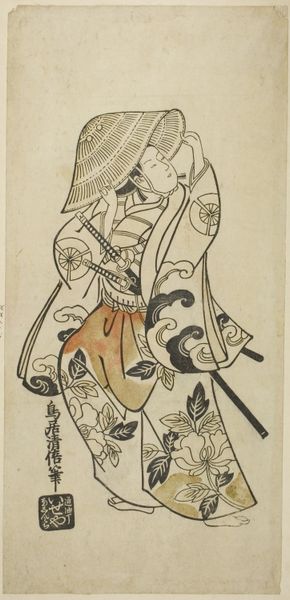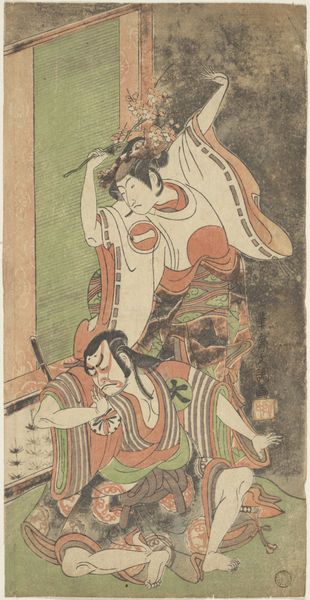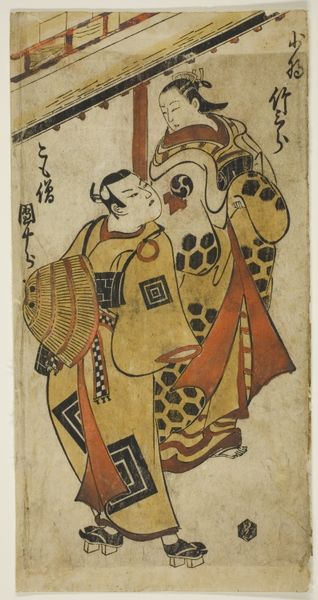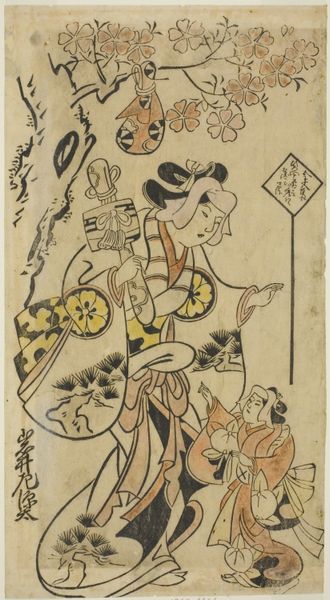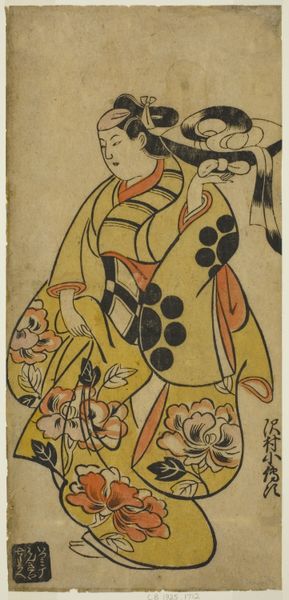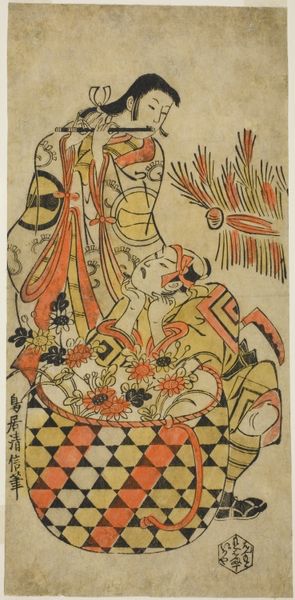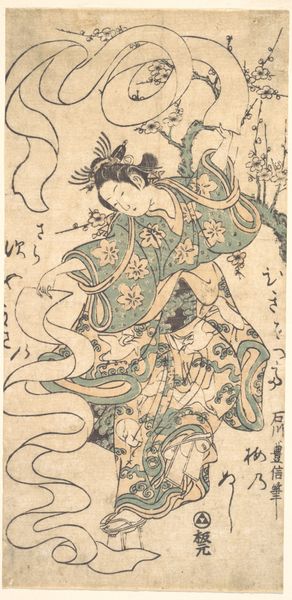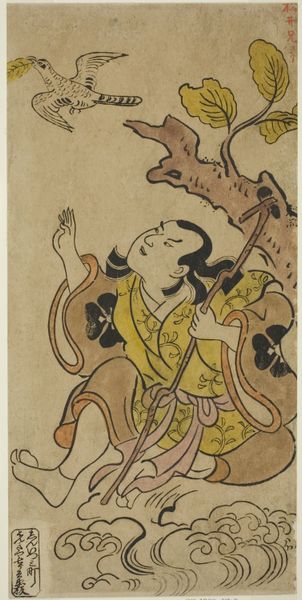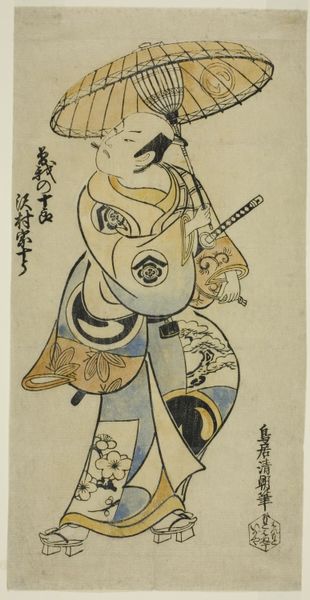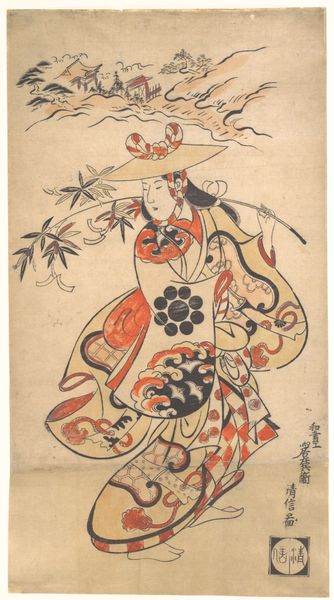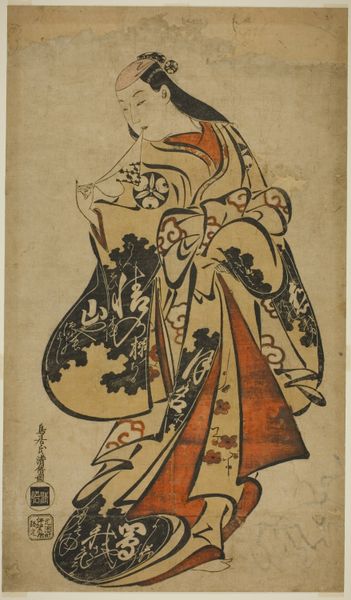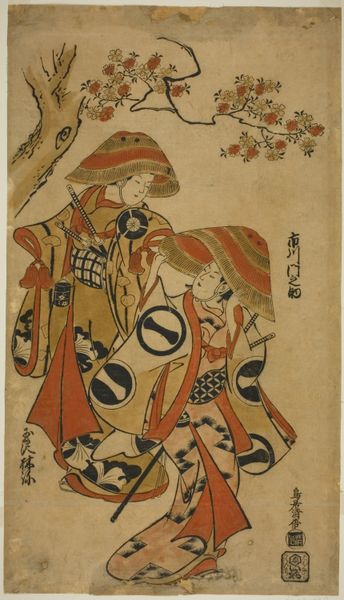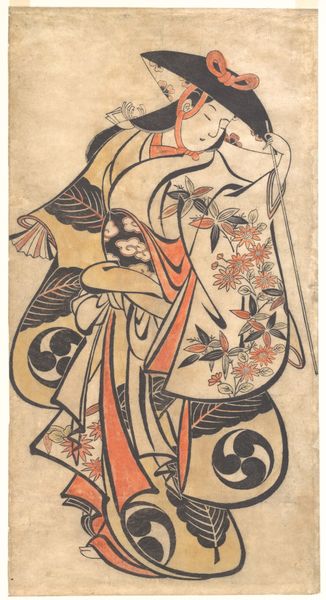
The Actor Ikushima Daikichi as a Woman Standing under an Ume Tree 1695 - 1715
0:00
0:00
print, woodcut
#
portrait
# print
#
asian-art
#
ukiyo-e
#
figuration
#
woodcut
Dimensions: 11 7/8 x 5 3/4 in. (30.2 x 14.6 cm)
Copyright: Public Domain
Editor: Here we have Torii Kiyonobu I's woodblock print, "The Actor Ikushima Daikichi as a Woman Standing under an Ume Tree," dating from around 1695-1715. It’s a really striking image; the stylized form is very graceful, and it makes me wonder about the details in the garments, what do you see in this work? Curator: This image pulses with symbolism. Notice the Ume tree—the plum blossoms—a direct link to themes of renewal, resilience, and the fleeting nature of beauty, deeply resonant in Japanese culture. But consider, too, that Ikushima Daikichi was a male actor playing a female role. What does that inversion signify for you? Editor: Maybe the blurring of social norms or gender expectations? Curator: Precisely. The "ukiyo-e," or "pictures of the floating world," prints often celebrated transient pleasures and challenged social structures. Look at the two dogs the figure is holding. How do those familiar animals feel, read against the plum blossoms and an actor in disguise? Editor: They're adorable but almost guardians in a way? It feels…protective. The dogs seem like auspicious symbols as well, wealth or good luck. Curator: The protective aspect of dogs certainly adds another layer. Symbols gain power through cultural memory, constantly evolving and re-inscribing our understanding. This print reveals much about Edo-period theatre, gender fluidity, and the enduring strength found in ephemeral beauty. Do you find that understanding enriches the artwork for you? Editor: Absolutely, noticing the cultural significance adds depth. It is much more complex than I originally perceived. Curator: Exactly. That complexity is what gives the artwork continued cultural potency and emotional weight.
Comments
No comments
Be the first to comment and join the conversation on the ultimate creative platform.
